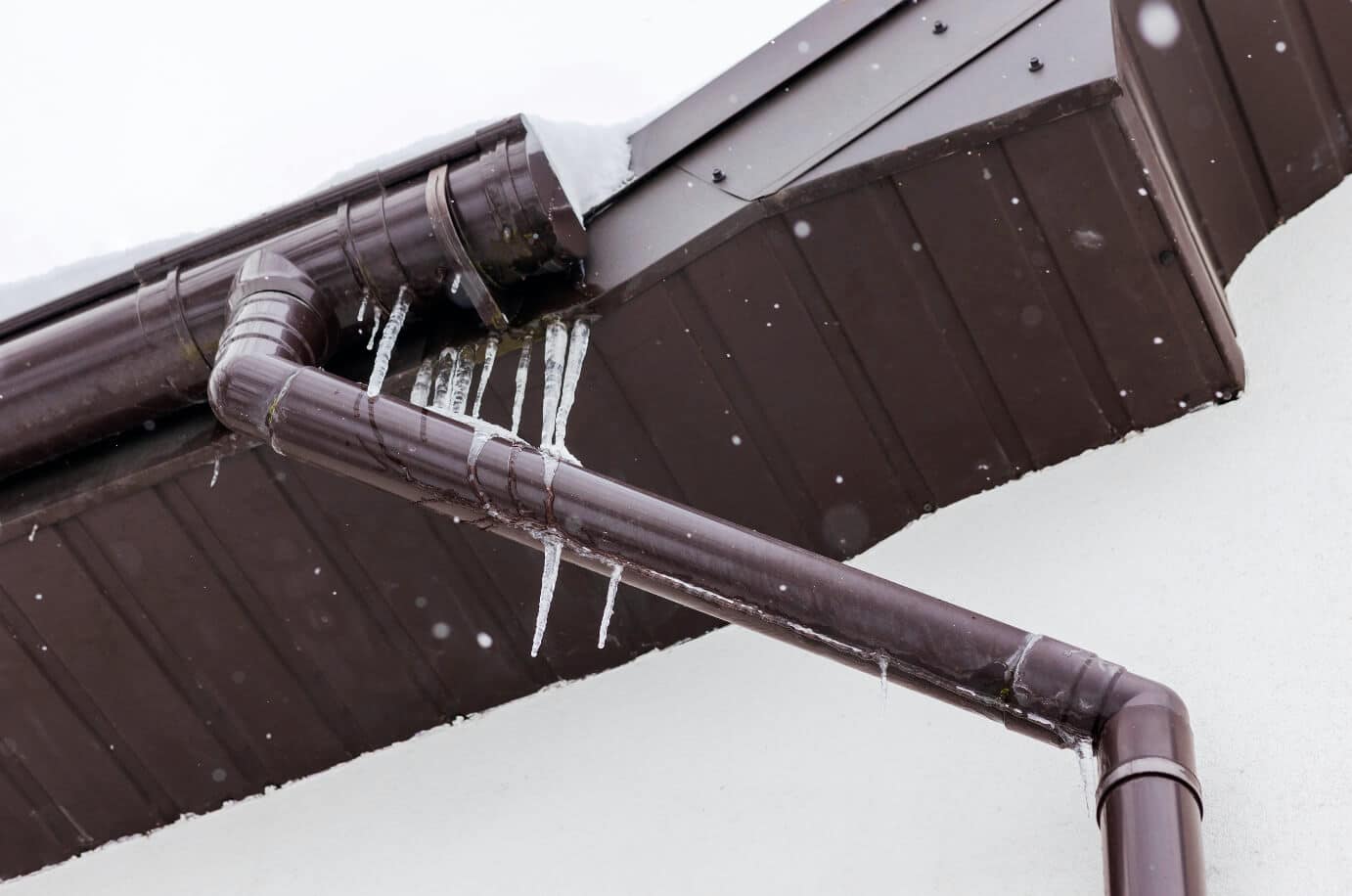
What Causes Ice Damming?
Ice damming on roofs is caused by a combination of things, primarily, heat loss from the building, fluctuating temperatures, and snow accumulation. The melted snow makes its way down your roof and contributes to the formation of ice damming. When ice dams form, they block the normal flow of water down the roof and into the gutters. This creates a barrier for the melting water and can cause seepage into the structure of your home. This can cause water damage to the roof, interior walls, and insulation. Besides water damage, any trapped moisture can encourage the growth of mold.
In Eastern Canada, snow accumulation and temperatures vary every year, and are an uncontrollable factor. Heat loss is the only one of these factors we can control. The Spray-Tech team can get you on the right track to tackling your ice damming issues.
How does insulation affect ice damming?
Insulation is the hat of your home, acting as a barrier between the indoor and outdoor air. Insulation can work to prevent ice damming by helping with heat loss reduction, maintaining a uniform roof temperature, reducing heat transfer, and controlling moisture levels.
Heat Loss Reduction:
By correctly insulating your attic, less heat is transmitted to the underside of the roof, minimizing the melting of snow.
Uniform Roof Temperature:
Correctly installed insulation helps maintain a more consistent temperature throughout your attic. The uniform temperature distribution prevents localized melting and refreezing of snow at the eaves, which is a common cause for ice damming.
Reduced Heat Transfer:
Insulation slows the transfer of heat from your living space to the roof, which limits the temperature difference between the indoor and outdoor environments. A smaller temperature difference means less snow melting and refreezing along the roof edges, effectively reducing the likelihood of ice dams.
Moisture Control:
Moisture buildup due to inadequate insulation can contribute to ice dam formation. Proper insulation, combined with proper ventilation, helps maintain a drier environment and reduces the risk of condensation and subsequent ice damming.
How does ventilation affect ice damming?
Ventilation affects ice damming in a very similar way to insulation. It helps maintain a uniform temperature, controls moisture and dries out your roof system. This prevents the accumulation of warm, damp air, which contributes to the formation of ice damming.
Heat Regulation:
Allowing cool air to enter through the soffit vents, and warm air to escape through ridge vents, the ambient temperature of your attic remains similar to the outdoor temperature, reducing snow melt.
Moisture Control:
Moisture from cooking, showering and drying your clothes all accumulates in your attic due warm air always rising. This moisture condenses on the cold surfaces in your attic, and can contribute to the formation of ice damming and mold growth. Ventilation in your attic works as an exchange system, letting warm air out and bringing cold air in.
Drying of the Roof System:
Due to the constant exposure to damp outdoor elements like snow and rain, your roof system is consistently damp during the winter and summer months. Correct ventilation allows moisture to evaporate more quickly, which reduces the likelihood of mold and ice damming caused by moisture retention.
Here at Spray-Tech, we take all of this into consideration when evaluating your attic. We understand the science of the building envelope, and work to reduce your problems through careful evaluation of your attic ventilation and insulation. Our team is qualified and experienced. Contact us today if you have ice damming issues. We serve Ottawa and the surrounding areas.
continue reading

